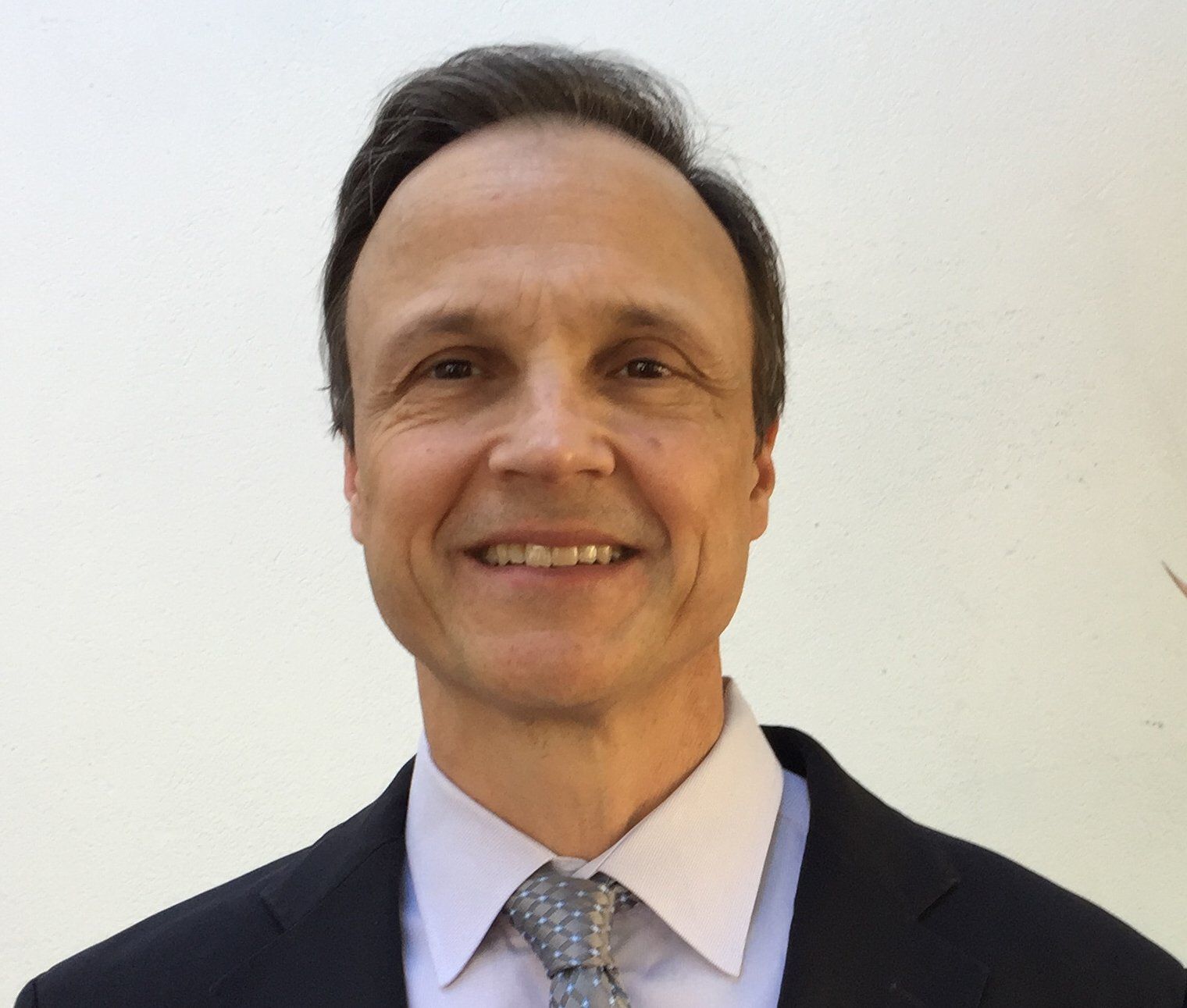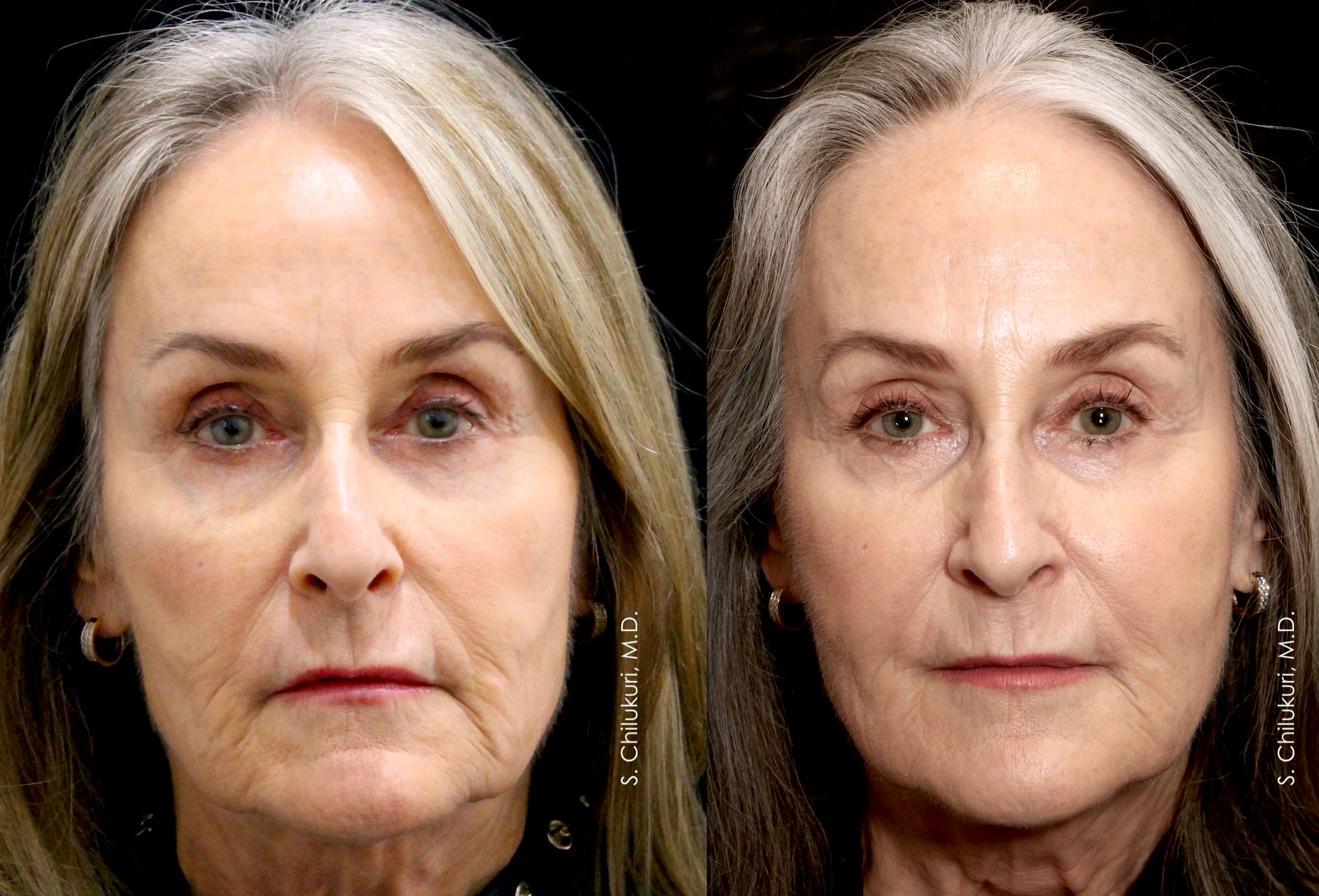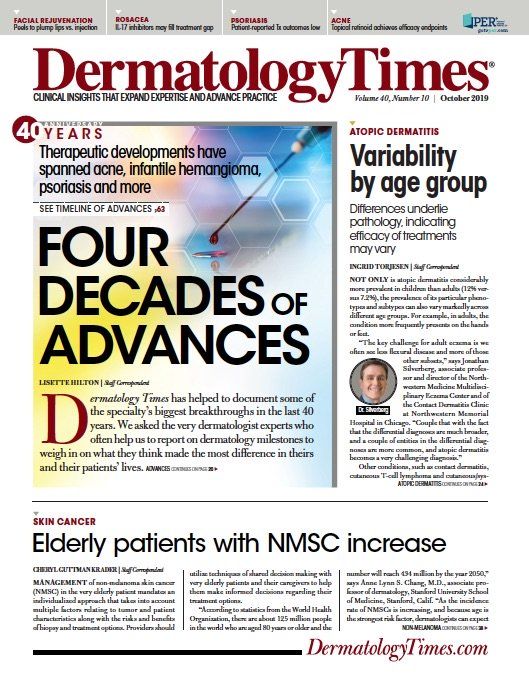- Case-Based Roundtable
- General Dermatology
- Eczema
- Chronic Hand Eczema
- Alopecia
- Aesthetics
- Vitiligo
- COVID-19
- Actinic Keratosis
- Precision Medicine and Biologics
- Rare Disease
- Wound Care
- Rosacea
- Psoriasis
- Psoriatic Arthritis
- Atopic Dermatitis
- Melasma
- NP and PA
- Skin Cancer
- Hidradenitis Suppurativa
- Drug Watch
- Pigmentary Disorders
- Acne
- Pediatric Dermatology
- Practice Management
- Prurigo Nodularis
- Buy-and-Bill
Publication
Article
Dermatology Times
Advancements in laser technology
Author(s):
From automation to application-driven menus, laser technology companies are rolling out devices and handpieces designed to deliver better results and safety profiles.
Female patient shown before and one month after a single treatment with the Lase MD (Lutronic). Photos courtesy Suneel Chilukuri, M.D.

Dr. Ross

Dr. Chilukuri

Female patient shown before and three months after two treatments with Exilis (BTL).

Aesthetic laser devices are changing rapidly to improve efficacy and safety - some with features straight out of a sci-fi movie.
“We’re seeing a lot more tools that aid the physician to get better results; a lot more automation and more application-driven menus,” according to E. Victor Ross, M.D., skin laser surgery specialist at Scripps Clinic Carmel Valley in San Diego. “There are more navigational features in laser technology, where the end user is going to be able to do assessments based on monitoring of the device with built-in diagnostics.”
In essence, the devices are becoming more automated. Some examples: Sciton is using optical coherence tomography to “pre-look” at the skin from the inside out. The noninvasive imaging technology helps medical professionals assess the skin and provides feedback about what settings might be good for resurfacing. Cynosure has a pigment meter that gives providers proper guidelines for settings based on the color of the skin, according to Dr. Ross.
Laser Device Innovations
Laser technology advancements present the opportunity to improve nearly every skin aging concern.
The Dermastat handpiece (Cutera) is one such advance on Cutera’s excel V, a 532 nm and 1064 nm device to treat vascular and pigmented lesions. The excel V is a great time-tested technology - it’s been around for about a decade. The technology turned new again and has been made better, according to Dr. Ross.
“The company has done three things to make it better over the last year. They’ve increased the power, which means it has a larger spot size; they have a thicker cooling window, which means it’s more comfortable and safer; and they’ve added this small handpiece, the Dermastat handpiece, which was the handpiece available on the very first model of the Gemini, the precursor to the excel V,” Dr. Ross says.
Using the pencil-sized Dermastat handpiece, dermatologists can navigate easily around the nooks and cervices, like the corners of the nose or the corner of the eye.
For facial rejuvenation, dermatologic surgeon Suneel Chilukuri, M.D., of Refresh Dermatology in Houston, often turns to the 1927 nm thulium laser Lase MD by Lutronic.
“It’s remarkable in terms of what we can do with this laser because we can limit the downtime to a day or less and really see nice changes in terms of skin quality and fine lines. I call it kind of a ‘polisher’ with minimal to no downtime,” Dr. Chilukuri says.
The 1927 nm thulium is a strong contender for patients who aren’t willing to endure the downtime that comes with laser skin resurfacing with a carbon dioxide (CO2) or erbium YAG (er:YAG) laser, he says.
Dr. Chilukuri says that treatment with the Lase MD isn’t painful and there’s no numbing involved. Patients usually are red for about a day.
“Occasionally, if I’m going more aggressively with it, they’ll be a little bit more red and slightly swollen for about three days,” he says. “The Lase MD is not going to be for the deep rhytids or deep static lines that are on the face because it’s not powerful enough unless you do multiple treatments.”
Fat, Skin Tightening & Collagen
Dr. Chilukuri also has experience with the recently released Accutite (InMode), which he says is an upgrade from earlier radiofrequency (RF) devices.
“Accutite really works well for skin tightening but also for melting small pockets of fat, like the submental fat. For those patients who don’t want the downtime from Kybella [Allergan], Accutite works great. It’s often a one and done. Results continue to improve over six to nine months. We’re also using this device for the lower eyelid for skin tightening. I’m involved with some research on this indication with an oculoplastic surgeon to determine the ideal depth of treatment and the best protocol,” Dr. Chilukuri says.
One of Dr. Chilukuri’s favorite and most utilized devices is BTL’s Exilis Ultra, which is the first technology to combine radiofrequency (RF) and ultrasound in one handpiece, according to Dr. Chilukuri. There isn’t any downtime, although patients might be red for 30 minutes after treatment. Exilis Ultra works well for stimulating collagen production, reaching the ideal temperature whether it’s on the face, the neck, the body - from 41 to 43 degrees Celsius - quickly and painlessly.
“We think its rapid and more evenly spread head is due to the ultrasound energy. It’s an unfocused ultrasound with a unipolar monopolar RF. It’s a fantastic device that I use multiple times a day,” Dr. Chilukuri says.
BTL’s Emtone is among the newest devices in the aesthetic realm. It combines acoustic wave and radiofrequency. Dr. Chilukuri says BTL is marketing the Emtone for cellulite and is seeking FDA clearance for other indications.
“What we’re seeing in our practice is that Emtone works really well for skin tightening especially on abdomen, the décolletage, arms and legs. The biggest advantage of putting both of those technologies inside one handpiece is that you’re able to get to higher temperatures more comfortably for the patient than ever before,” Dr. Chilukuri says.
Longer Life, Dual Wavelengths & Interrogation Systems
Another hot topic and technological advancement is microneedling with radiofrequency primarily for skin tightening, according to Dr. Ross.
“We’ve done a lot of work with the Genius device (Lutronic). It has a so-called intelligence design where it actually constantly interrogates the skin to look for the maximal deposition of energy,” Dr. Ross says.
There are several problems with radiofrequency microneedling devices, including that the needles oftentimes don’t go in all the way, according to Dr. Ross.
“Lutronic worked on that in two ways. They have a more powerful motor and sharper needles, but more importantly they have this interrogation system,” Dr. Ross says. “If you don’t deliver all the energy that you’re supposed to, it gives you a warning.”
Candela has its new Vbeam Prima pulsed dye laser device. That’s an important advancement because it does things pulsed dye lasers couldn’t do before, according to Dr. Ross.
“It has a longer dye life. It has two wavelengths versus one wavelength,” Dr. Ross says.
Acne, Stretch Marks & Skin Tightening
One of the lesser known companies that has a good track record is Fotona, which manufactures the multi-application aesthetic laser system, SP Dynamis. The Fotona aesthetic laser is a versatile and powerful device, according to Dr. Chilukuri.
“That’s one of the devices where I think dermatologists - especially those with fellowships in lasers and cosmetics - are going to hit a homerun because there are so many options with this laser. You can use it to treat acne, to treat stretch marks and for skin tightening,” he says.
The Aerolase Neo (Aerolase) is another example of a device that’s revolutionizing acne treatment, according Dr. Chilukuri.
Dermatologists can use the Aerolase Neo on patients with active acne to generate high energy at a safe level to reach the dermis and significantly clear lesions within 24 to 48 hours after treatment, Dr. Chilukuri says.
“The difference between this and the original nd:YAG lasers that we’ve used for ever and ever is the microsecond pulse. This utilizes 650 microseconds which is longer than nanosecond and picosecond pulse durations,” he says. “Even though the device is physically small - it looks like a little suitcase - the Aerolase Neo is extremely powerful. We use it most often for acne, but we also use it for telangiectasias, rosacea, PIH and for what I call a laser toning procedure where you can tighten up the skin. It’s not as powerful as the Exilis Ultra or the Accutite with a single treatment, but it works quite well with no downtime and is safe for all skin types.”
Multiple Single-Session Treatments
Sonia Batra, M.D., M.Sc., M.P.H., medical director at Batra Dermatology in Santa Monica, Calif., and co-host of The Doctors, says she is using multiple devices on the same day to consolidate downtime and give patients more dramatic results. For example, Dr. Batra has several devices from the Venus company and offers patients the company’s Tribella protocol.
“We do intense pulsed light (IPL) which is more for discoloration. We do radiofrequency, which is more for toning and tightening the skin. Then, on the same day we also do Venus’s nanofractional radiofrequency which is a resurfacing handpiece,” Dr. Batra says. “We’re doing this with other lasers and devices in our practice too, where we try to have the patient come in and address a couple of different concerns with different devices on the same day. For example, I frequently will treat vascular lesions with a VBeam pulsed dye laser on the same day as I treat pigment and texture with a PicoSure.”
Dr. Batra says that she sets the energy of each device a bit lower than she might if she were using one device, alone. She does that to avoid complications from stacking heat in the skin.
“We’ve also become much more precise about how we allot our time as our patients and I have to have enough time to do multiple devices in one visit. In the Tribella protocol, for example, the radiofrequency I delegate that to my registered nurse. But the nano-fractional RF and IPL I perform myself,” Dr. Batra says.
As a result of combining devices, patients get results that approach much more aggressive treatments and devices with much less downtime.
“For example, the Tribella protocol addresses both color as well as texture as well as some aspects of laxity, with usually about three days of being pink and puffy. Many patients would prefer a series with this protocol as compared to a full-blown fractional CO2 laser, which would be 7 to 10 days of downtime,” Dr. Batra says.
These technologies are catching up with aesthetic providers’ and patients’ wish lists, according to Dr. Chilukuri.
“I think the next steps are more automation and interaction between the operator and the device. A lot of things are happening. I think we’ll see things happen even faster in the next five years than in the last five years,” Dr. Ross says.
Disclosures:
Dr. Batra has worked as a consultant for Venus. Dr. Ross is a consultant with and has done research for Lutronic and has received honoraria from Candela. Dr. Chilukuri has worked as a consultant and speaker for Alastin, Aerolase, Allergan, BTL, Cynosure, Eurothread, Galderma, InMode, Lutronic, PCA Skin, Sinclair, Theravant, Under Skin and ZO Skin.






